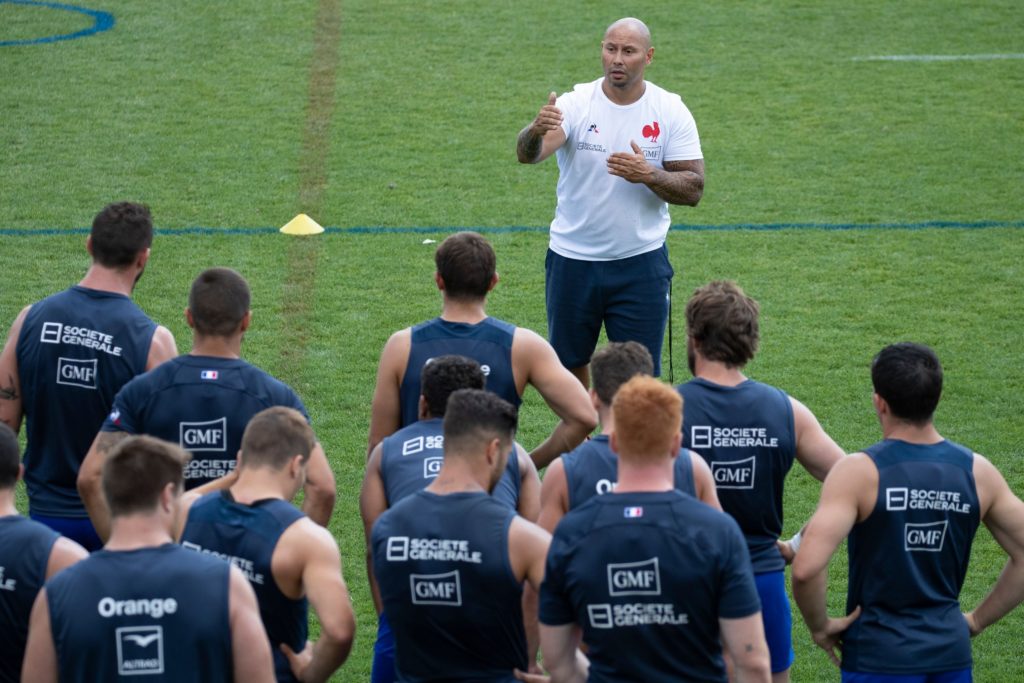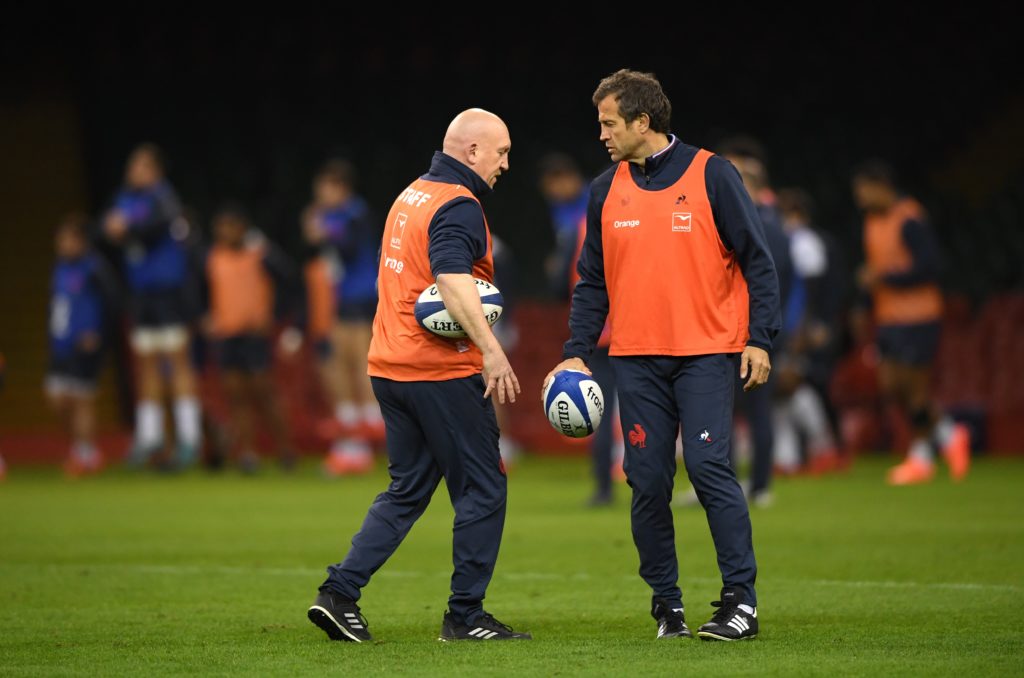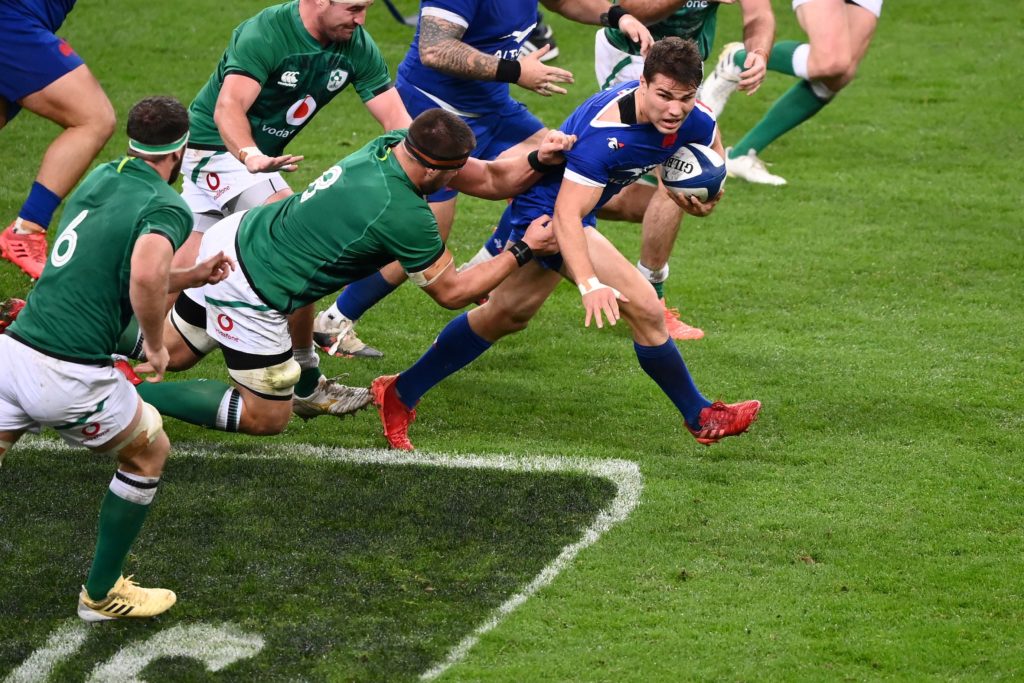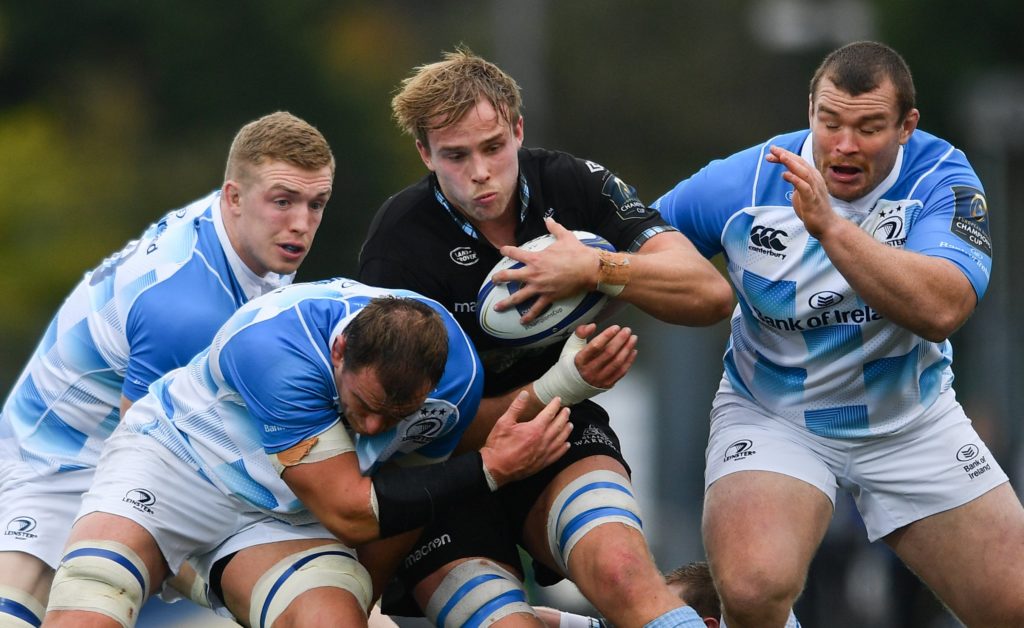Every week of their Rugby World Cup training camp, French players broke like trees in a storm, their bodies wilting under the almighty stress of their new regime.
Fabien Galthie, the soon-to-be head coach, had commenced his revolution, placed into the group as a consultant to get a jump start on his new gig. If Galthie, with his blinding alabaster trainers and aeronautical glasses, is the face of the fresh, irrepressible France, then Thibault Giroud is the muscle.
The head of athletic performance pitched up at Marcoussis last summer and took a sledgehammer to the training philosophy of old. These weeks were utterly critical in transforming France from bloated and maddening to dynamic and deadly. The new, high-intensity, rugby-centric approach was a ferocious jolt to the players. Some could not cope with the loads. It did not prove universally popular.
“We had pressure from the media and clubs because we lost players the whole summer. Every week we had players going back home because they couldn’t keep going,” Giroud tells The XV.
“We had to take a risk before the World Cup. Yes, we injured some of the boys, but I think it was very important to change that culture and make that step. You cannot change that before the Six Nations when you only have a couple of weeks of preparation.”
We had lost ourselves in trying to adapt our rugby to the players. A lot of basic physical abilities were developed through machines or off-field work, not really through rugby.
A wide and varied athletic career took Giroud from skiing to sprinting, American football and the brink of the NFL to bobsleigh, where he represented France at a Winter Olympics, and then to rugby league and rugby union. He worked with the Cats of South Africa, Saracens, Biarritz, Pau, Glasgow Warriors and Toulon, where he met Galthie and the seeds were sown for his ascent to the national setup. He feasted on the wisdom of so many coaches, harvested gems from each sport he played, and brought them back with him to France.
“We had lost ourselves in trying to adapt our rugby to the players,” Giroud says of what he inherited. “A lot of basic physical abilities were developed through machines or off-field work, not really through rugby.

“Developing general endurance or strength is easy. Do you think developing an extra 30% on bench press will help us to win games? I don’t think so. Do you think increasing everybody’s pure strength by 30% will transfer into what we want on the field? I don’t think so.
“We wanted a culture where everything is developed inside rugby. When we are doing physical development, it had to be within rugby’s parameters. With all the new technology, GPS and data you can collect, you can set targets for each session, and if you didn’t hit them, you can do some top-ups.”
For years, Giroud says, French rugby players were mired in a doomed practice. They trained for long periods at medium intensity, believing it would boost their stamina. Players gave their all when charging on the carry, then treated defending as a breather. Crucial aspects of performance – power, speed and acceleration – were neglected, areas entirely fundamental to elite rugby.
We had players who could be very good in contact, or very good in high-intensity running but they couldn’t be very good in both. In world-class rugby, you must be good in both.
When Galthie arrived, bringing Shaun Edwards with him, Giroud ripped them from that routine. Everything he does is designed to condition the players to perform exactly as Galthie wants, to mesh perfectly with the style he has crafted. For the behemoths of the French pack, it was a frightening culture shock.
“We had big forwards, yes, but they couldn’t keep up with the high-intensity running,” Giroud says. “We had players who could be very good in contact, or very good in high-intensity running, but they couldn’t be very good in both. In world-class rugby, you must be good in both.

“At the end of the World Cup, in short passages of play below two minutes, we didn’t have enough speed from our forwards, especially without the ball. In longer passages, our high-intensity running and contact work dropped after two minutes. Basically, our forwards were in trouble from day one. We were too big, we were good in contact for a very short time, and we couldn’t keep up with the running at high intensity and then the contacts after that.
“The French were thinking the bigger you are, the better you are in collision. It was important to make those boys understand that it’s not how big you are, it’s about how fast you can move.”
The key was trimming hunks of beef from his heavyweights while maintaining, or even increasing, their physical prowess.
“We had boys who were maybe 130kgs, very strong, very explosive, but we need to be able to keep the same and develop more strength, power, speed and acceleration, but weighing 10-15kgs less,” says Giroud.
It’s not how big you are, it’s how you can accelerate the body into space or into contact. It was very hard for the French guys to understand that I’m going to lose weight, but I’m going to be faster, stronger, more explosive.
“If you take a 20kgs rock and throw it into the wall, and a 10kg rock and throw it into the wall, which one is going to make more devastation? It will be the 10kgs rock. Why? Because you can accelerate that rock a lot more than the bigger one.
“So, it’s not how big you are, it’s how you can accelerate the body into space or into contact. It was very hard for the French guys to understand that I’m going to lose weight, but I’m going to be faster, stronger, more explosive.”
What Giroud has also helped foster is the devastating capacity for France to change gear in a heartbeat, erupting when they smell blood and a sliver of opportunity beckons.
We saw how quickly they can detonate that lethal attacking game throughout 2020. Think of Antoine Dupont taking off like a scalded cat, Charles Ollivon’s galloping scores against England, or the gorgeous Romain Ntamack try in the final-round castling of Ireland.

Giroud is loath to take credit for the glorious form. He stresses that he is but one cog in a complex and slick machine, part of a huge overhaul of how the national team operates spearheaded by hungry young men like Dupont and Ntamack.
“The sequences of ball-in-play were longer in the World Cup. The overall ball in play was not, but the sequences were,” Giroud says. “There was a lot more emphasis on possession. Now, we know that the kicking game is an attacking tool.
“I am trying to use changes of rhythm collectively and individually as much as possible, and not only when you come into the opposition 22. We know we burn a lot more energy in attack than defence, so the kicking game for us is very important, being able to give the ball back to save energy and use the transition as a game of being more explosive and changing rhythm and trying to be more based on lightning effort than just have the same effort for 80 minutes.”
Hoggy, [Stuart Hogg], Tommy Semyour, Jonny Gray, Nick Grigg, I enjoyed working with, but there wasn’t one guy that I didn’t. The whole club trusted me from day one
This weekend, Giroud returns to Scotland, where he spent a happy and thought-provoking year coaching at Glasgow, as France play what is almost certainly an Autumn Nations Cup group decider at Murrayfield.
Gregor Townsend was in charge at Scotstoun back in Giroud’s day. Many of the players he helped fine-tune are mainstays of the Scotland side. Jonny Gray, in particular, made big strides working with Giroud on the explosiveness of his carrying
The Frenchman’s time in the rain-sodden city opened his eyes to an expansive game plan and the sort of qualities he needed to develop in its players.

“At Glasgow, we had a lot of players who had very good top speed, but they reached maximum velocity at different times,” he says.
“Rugby is a game of acceleration, so the goal for me at Glasgow was to try to make those players reach their maximum velocity as early as possible by changing the mechanics of running. It is not about how fast your legs move, it is about applying the force through them. We made the force through their legs forwards, not vertical, so it pushed their bodies along.
“Hoggy, [Stuart Hogg], Tommy Semyour, Jonny Gray, Nick Grigg, I enjoyed working with, but there wasn’t one guy that I didn’t. When you come to a team as the only French guy, sometimes it is a worry if they will trust me, but the whole club trusted me from day one. I can’t thank Glasgow enough for that. But it rained a bit too much for me.”
Should Scotland and France reach maximum velocity on Sunday, the results will be spectacular, and the muscle-bound bobsledder on the sidelines will have had plenty to do with it.
More from Jamie Lyall
If you’ve enjoyed this article, please share it with friends or on social media. We rely solely on new subscribers to fund high-quality journalism and appreciate you sharing this so we can continue to grow, produce more quality content and support our writers.


Comments
Join free and tell us what you really think!
Sign up for free